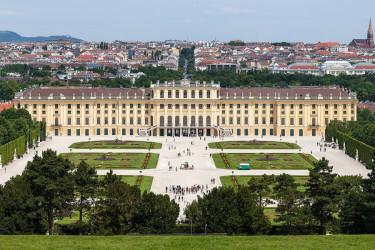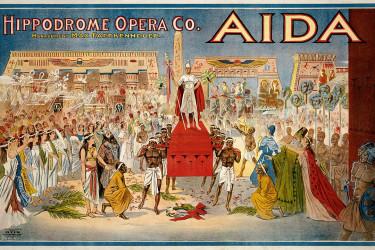
A scene from Bizet’s “Carmen” | Photo by Catherine Ashmore
Welcome to the Classical California's Guide to Opera, a new series of blogs designed to help you explore the world of opera. Whether you’re newly interested, vaguely curious, or looking to expand your knowledge, this series will help break down the jargon, introduce you to some gorgeous music, and the local groups putting on incredible performances in the Southern California.
Getting started is always the hardest part so we’ve put together a list of 5 essential pieces to give you a sense of the variety of music and story you can expect to find out there in the opera world.
1. “Nessun Dorma” from Puccini’s Turandot
As the standout aria from Puccini’s final opera Turandot, “Nessun Dorma” has become the gold standard by which all other tenor arias are judged. This aria opens the final act of the opera, a nighttime scene and is sung by the Prince Calaf who longing for his love for the Princess Turandot to be reciprocated. She has agreed to marry him, but only if he can solve her three riddles. If he cannot, he dies.
2. Ride of the Valkyries from Wagner’s Die Walküre
If you grew up watching Bugs Bunny don the costume of a Valkyrie and run from the angry intentions of an opera singing Elmer Fudd, then you are familiar with Richard Wagner’s “Ride of the Valkyries” from Die Walküre, the second of the four operas in his legendary Ring Cycle. It has since gone on to be one of the most familiar melodies in opera and can easily be hummed by opera lovers and non-opera lovers alike. It opens Act 3 of the opera, when eight sisters of Brünnhilde are preparing with a battle cry to escort the fallen heroes of Nordic legend to Valhalla.
3. “Der hölle rache” (aka “The Queen of the Night’s Aria”) from Mozart’s The Magic Flute
This is the second and most famous of the Queen of the Night’s technically taxing arias in Mozart’s audience favorite The Magic Flute. In this moment, the Queen is asking her daughter, the Princess Pamina, to kill the princess’s father and the Queen’s former husband, Sarastro. Sarastro is a rival to the Queen’s claim to ruling the land and if Pamina does do as she wants, the Queen will disown her daughter. It is a fierce and fiery aria, asking the soprano to perform vocal acrobatics rarely seen in Mozart operas.
4. “Largo al factotum” from Rossini’s The Barber of Seville
Another familiar melody from your days of watching Bugs Bunny (The Long-Haired Hare), this aria from Rossini’s Barber of Seville is challenging and exciting for its use of high energy combined with the constant patter of its lyrics. It is Figaro’s introduction to the audience, where he explains why he is so popular in Seville and how he is called upon to do pretty much everything.
5. “L’amour est un oiseau rebelle” (“Habanera”) from Bizet’s Carmen
Carmen’s sensuous aria from Act I of Bizet’s beloved opera sets the tone for her character. The lyrics relate love to a rebellious bird that flits from man to man and can never stay in one place – much like Carmen herself! She uses this as her entrance to the drama, seducing the soldiers that are stationed in Seville while her fellow female cigarette makers look on in delight – or jealousy depending on the staging.
Bonus! “Libiamo ne’lieti calici” (“Brindisi”) from Verdi’s La Traviata
No list of opera essentials would be complete without this rousing drinking song from Verdi’s La Traviata. In this scene, the courtesan Violetta is hosting one of her famous parties for her socialite friends and Alfredo, her young would-be lover, is encouraging everyone to raise a toast to love and life.







